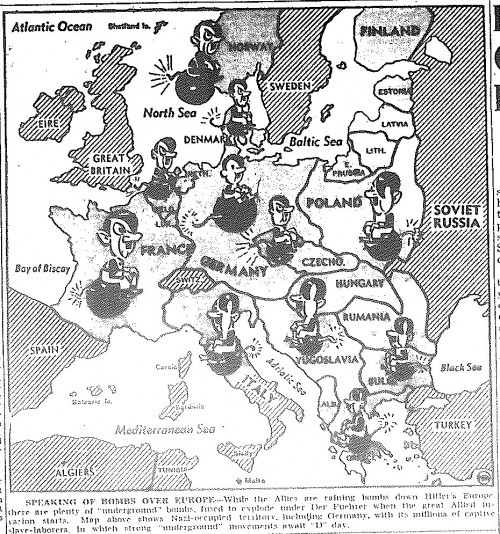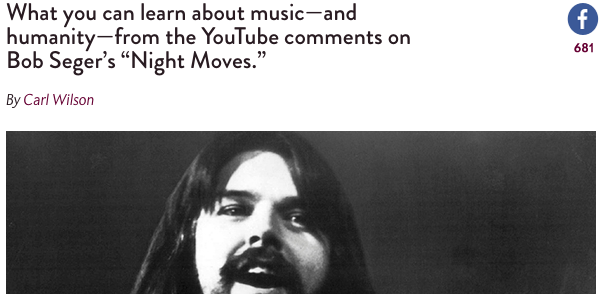MEAN MONDAYS: THIS, THE AGE OF CRUMBS
 Hey, does anybody remember when Sam Pink did the ‘other people’ podcast where the interviewer asked a series of really vapid questions and made each answer about himself by ‘relating’ with an anecdotal story even though his anecdots were less interesting than the lumber aisle at home depot.
Hey, does anybody remember when Sam Pink did the ‘other people’ podcast where the interviewer asked a series of really vapid questions and made each answer about himself by ‘relating’ with an anecdotal story even though his anecdots were less interesting than the lumber aisle at home depot.
Then, after an extended period of extreme awkwardness, asked the most undignified, shameless question ever to be asked in any interview: ‘do you like me?’
Wasn’t that, like, totes, the most hilarious/fucking tragically pathetic moment in the last 5 years of human interaction or what.
10 Reasons Why The Knicks J.R. Smith Is Like The Novelist Norman Mailer
My favorite NBA player, Larry Johnson, had a gold front tooth, yelled at the ball during free throws, once told an interviewer that his diet consisted of soda and candy (imagine reading this as a teenager) and had a series of TV commercials where he transformed into his alter-ego: a gray-wig wearing, puffy flower dress clad, narrow vintage glasses wearing, “Grandmama.” I fondly remember wearing his replica jersey (the very first of these ever for sale) several sizes too large, more dress than jersey.
“THE COLORS TODAY ARE GOING TO WAKE YOU UP!!”
Lindsey Wixson is primarily known in the fashion industry for her unique look: her dramatic lips, playful pout and her trademark gap between her two front teeth. The public narrative Wixson and her representatives have crafted for her is a rather detailed one, even providing information about the dreams and aspirations of the young woman had she followed a different path. During her childhood Wixson wanted to follow a culinary or legal career.
Her professional goals became exclusively fashion-oriented in the brief outpour of success that occurred after Steven Meisel chose her for the cover of Italian Vogue. After the cover, Wixson was booked for two luxury brands, Prada and Miu-Miu, both as exclusives. Ever since, she is a widely recognized face and prominent model.
In an interview with WWD, Wixson discussed how she understands her path and her ascend to success. She single-handedly cites reading a Reader’s Digest (RIP!) in a bathroom when she was 12 as the catalyst for her pursuit to become a model: “It was about how Bill Gates — the millionaires — got big. It was talking about how they took the chance and they took their opportunities and they took it to a whole other level.”
*
Do you ever look around at the world, noticing the people surrounding you? Wondering how they understand their existence, how their brain functions and to what degree their understanding of things is similar to yours?
I do. That is why this video-mosaic of the famous model Lindsey Wixson is possibly the most fascinating thing I have seen in the recent past. It bewilders me to see her and her responses to reporters asking her questions about her experience and opinions as she is preparing for fashion shows. Within about a minute, Wixson manages to fit these gems:
The colors today are gonna wake up. They’re going to be, like, ‘WAKE UP, GUYS!’
BEAAAAUUUTIFULLLL! Oh my god, look at this dress! It’s Roberto Cavalli, it’s crazy!
It’s over the top, glamour, period-retro
I would like to become a pilot.
I feel like a woman from Mars… Obviously, I am, like, taking over the world. Pedal to the medal!
Screaming Monsters and Sordid Gays: Ian Bogost’s Alien Phenomenology
I was really looking forward to reading Ian Bogost’s philosophy book, Alien Phenomenology, or What It’s Like to Be a Thing. Two girls who I absolutely admire — one who writes criticism about Thoreau, one who writes plays about Louis Braille — placed praise upon the book, and I was prepared to do similarly.
Ian’s book is bound to object-oriented ontology, a philosophy that posits that “nothing has special status, but that everything exists equally — plumbers, cotton, bonobos, DVDs.” For Ian, the world is composed of units, where “something is always something else.” Humans, the stars of so many philosophies, can neither be separated nor elevated above other things because those things are a part of them and they are a part of those things. While Kant (a bland German boy), Heidegger (a curious Nazi boy), and others put people on a peerless pedestal, Ian puts them in messy dot where millions of encounters occur at once. As Ian explains:
On August 10, 1973, at a boathouse in Southwest Houston, the shovel of a police forensics investigator struck the femur of one of the seventeen corpses excavated that week, victims of serial killer Dean Corll.
The boathouse, the shovel, the police boy, the serial killer — each is a unit, and each unit leads to other units. The serial killer boy probably possessed a mommy and daddy, and his mommy and daddy are units who are entwined with more units. Object-oriented ontology suggests the unceasing character of the Nazis, who were invariably inserting themselves into more land, lives, and histories. Units are all over, and, during World War Two, so were the Nazis.
But not all of object-oriented ontology can be compared to screaming monsters who slaughtered six million you-know-whos and five million ummms. Some of Ian’s philosophy aligns with utterly unpleasant people, like Walt Whitman and Allen Ginsberg. Each of these canonized homosexuals has a penchant for lists. Whitman enumerates his electrified body parts while Ginsberg tells of the objects that have transfixed his tushy. For Ian, “Lists remind us that no matter how fluidly a system may operate, its members nevertheless remain utterly isolated, mutual aliens.” Whitman-Ginsberg types show this shared separateness in a most sordid way. Queer theorist Tim Dean details how homosexuals disclose the inevitable objectification of s-e-x. Disputing Andrea Dworkin’s belief that porn “dehumanizes those whom it fetishizes,” Dean says that all s-e-x, not just the porn kind, “fragments and particularizes.” Such fragmentation is disgustingly displayed in the gay community, whose members, according to Dean, BJ boys through holes in the wall, then spit the c-u-m into a container, which is then funneled into other boys’ tushies.
Social Media is Unchristian
Once I read a really revealing book about social media and the primary 21st century economy. The book I speak of is 24/7 by Columbia University boy Jonathan Crary.
Jonathan’s thesis is that American and Americanlike people reside in a contemptuous 24/7 universe. Throughout the book, Jonathan explains what the term “24/7” means to him. According to Jonathan, 24/7 is a “time of indifference” that “renders plausible, even normal, the idea of working without pause, without limits.” If 24/7 was a person, it’d be an indelicate, indiscriminate one who insists on pumping out putrid products (like iPads and bisexuals) even on the most divine day of the year: Christmastime. 24/7 “decrees the absoluteness of availability.” Like those excessively-sexed gays, 24/7 people are always available. Whether it’s formulating a Facebook status, an Instagram, or a Tweet, in the 24/7 zone, accumulation occurs nonstop.
The base of 24/7 people’s identity is social media. Jonathan says that there are “numerous pressures” for these types to be like the “dematerialized commodities and social connections in which they are immersed so extensively.” Jonathan then posits that 24/ people “invent a self-understanding that optimizes or facilitates their participation in digital milieus and speeds.” Oscar says, “One should either be a work of art, or wear a work of art.” 24/7 people, though, want to be their social media accounts: open, overt, public, and explicit. Mystery and secrets are assaulted. Unlike the thrilling Victorian tales, where colonized girls are kept in attics and orphan boys haunt feverish heroines, 24/7 people conceal nothing, since their circumstances command constant communication.
Google boy Eric Schmidt deems the 21st century the “attention economy.” For Jonathan, Eric and others (like that utterly un-stylish Mark Zuckerberg), aim to normalize “unbroken engagement with illuminated screens of diverse kinds that unremittingly demand interest or response.” In the 24/7 world, thought and reflection are allocated little value. Any moment that isn’t spent liking something or refreshing something or commenting on something is of no use, since it’s a moment devoid of production.
One of the sharpest and staunchest Christian boys ever, John Milton, believed that the commendable Christian’s primary task is to search for truth. Eden is so estimable because truth is installed in one location: God. All one must do is obey Him. But Eve (a girl) didn’t do that, so she, her boy, and consolidated truth bid bye-bye. Now, in the perverted postlapsarian predicament, Milton says truth “opens herself faster than the pace of method and discourse can overtake her.” Post-Eden truth is mobile, quick, nimble, and elusive. But the wonderful Christian never ceases to try to collect as much of it as he can. Through reading, reflecting, and thought, Milton could capture truth and “unite those dissevered pieces.”
The 24/7 world and Christianity are archenemies. The former is founded on careless compulsion, while the latter is infinitely entwined with divine consideration.
God engenders everything, so he obviously made Instagram, Twitter, and so on. But God is also really mischievous (just ask Job), so maybe he made these things to separate the thoughtful ones (Christians) from the fartheads (unchristians). Eric Schmidt and Mark Zuckerberg and all those other Cali boys may have mounds of power now, but when the coda comes, they’ll be spending their forever in hell, not heaven.
“Perhaps if I avoid critical reviews (not merely negative ones), what I acknowledge is that I am afraid that I will actually be read carefully, deeply, and that the results will complicate my endeavor. But surely a complication of that sort could materialize (with any luck) in one’s very next poems. It might improve them.”
— Joshua Marie Wilkinson’s thoughts on poetry criticism over at The Volta are I think legitimately splendid, of a shiny clarity, and they make me feel shitty about how often I’ve let opportunities/invitations to do more nuanced critical work slip by because they promised to take more time/work than manic imploring.
Over at a mock Poetry Foundation Jim Behrle’s chimed in about the Kill List: his being upset about it, among other things, as well as his attempts to contact the publisher(s) to see if they’d “comment on any efforts they made to fact check the poem?”
I mean, really? Really? And I’m with Mark Johnson 1000 literal (ha ha) % when he says that Behrle’s piece is “so embarrassing.”
And how embarrassing, also, the way in which so many others have reacted to this Kill List. And how embarrassing, also, that CAConrad’s heaped abuse on Mark for speaking up in the poem’s defense, comparing (after other insults) Mark’s “stupidity” to the “plaque on very filthy teeth.”
And how embarrassing (but not surprising) that Conrad’s little drones let him get away with shit like this.
This Kill List’s turned out to be a great litmus test, indeed. Blah, blah.
You don’t have to write. You don’t need it like the air. You do have a choice. You could stop at any time. In all likelihood, no one would be sorry if you did. It would be fine. It might even make you happier. And isn’t that all for the best? Wouldn’t you rather choose how to spend your only life than have it chosen for you?
The one semester I was lucky enough to teach creative writing, the last project I gave my students was to make the most beautiful thing they could imagine. Practically no one wrote a story or a poem. Someone is giving you the same assignment.








